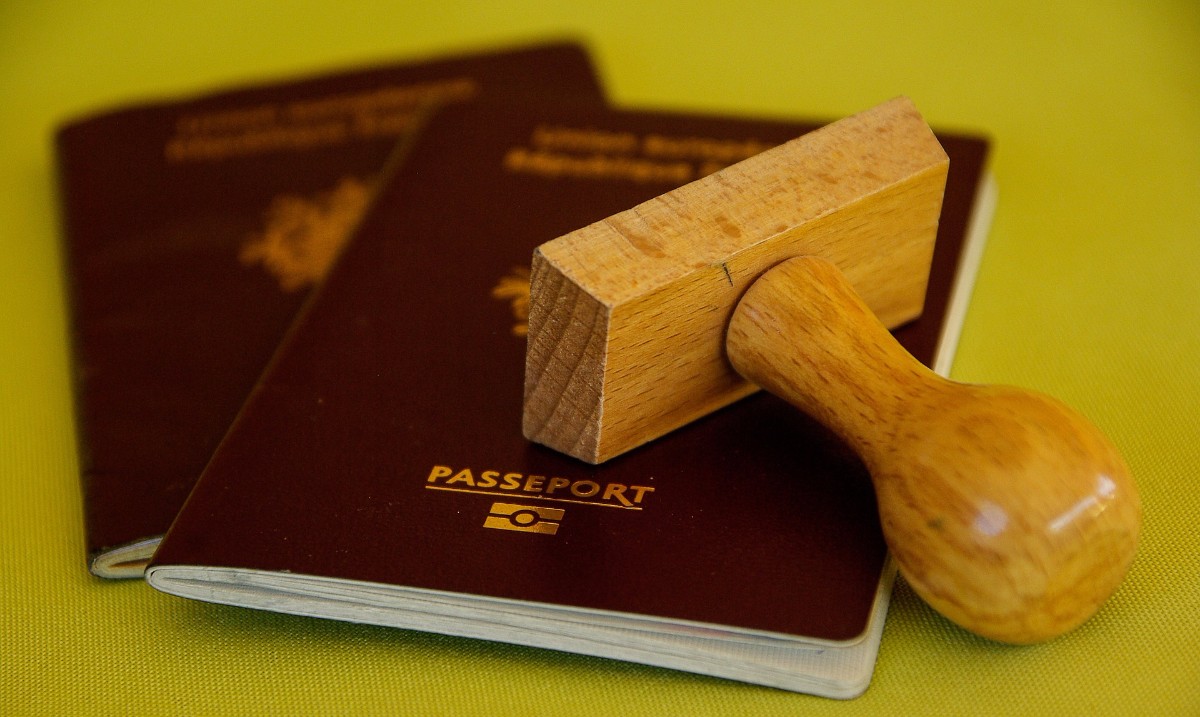 https://pixabay.com/en/buffer-passport-travel-boundary-1143485/
https://pixabay.com/en/buffer-passport-travel-boundary-1143485/
Biometrics: Exposing the Silent and Invisible Threat of Visa Overstays
By Alexandra Rosen, 2017 WiSe Fellow
In an age of terrorism, the challenge for national security is to facilitate the legitimate flow of people into the United States while simultaneously preventing the entry of those who pose a risk to public safety. The ability to distinguish between illicit and earnest movement across our borders is a significant undertaking—both in terms of cost and strategy.
In 2002, the National Commission on Terrorist Attacks Upon the United States (the 9/11 Commission) reviewed the circumstances surrounding the September 11, 2001 terrorist attacks, including evaluating the preparedness for and the immediate response to the attacks.
The 9/11 Commission’s final report issued the following recommendation: The Department of Homeland Security (DHS), properly supported by the Congress, should complete, as quickly as possible, a biometric entry-exit screening system, including a single system for speeding qualified travelers.
Implementation of this recommendation is long overdue. Since 1996, a series of federal statutes have required the federal government to develop, integrate, and evaluate a viable entry-exit screening system.
In 2004, The Intelligence Reform and Terrorism Prevention Act codified the 9/11 Commission recommendation to require biometric identifier technology in airport access control systems. The law defines ‘biometric identifier information’ as distinct physical or behavioral characteristics of an individual that are used for unique identification, such as fingerprints or photographs.
In 2017, the absence of a ubiquitous biometric entry-exit screening system creates numerous difficulties for DHS in identifying overstays. The DHS Fiscal Year 2016 Entry/Exit
Overstay Report defines ‘overstays’ as individuals lawfully admitted on a temporary basis who then remain in the country beyond their authorized period of admission.
While a 2008 Government Accountability Office (GAO) report asserts that most overstays “are likely motivated by economic opportunities,” it only takes a few bad actors to pose a significant national security risk. For example, five of the nineteen September 11, 2001 hijackers were overstays.
Within DHS, Customs and Border Protection (CBP) is responsible for entry-exit policy and operations. According to a 2017 GAO report, CBP collects biographic and biometric information to document nonimmigrant’ entry into the country. The same attentiveness should apply to movement out of the country.
Without reliable exit data, it is extremely difficult for DHS and law enforcement to accurately assess the terror threat landscape in the United States or identify public safety concerns in a risk-based manner.
The DHS Fiscal Year 2016 Entry/Exit Overstay Report highlights a significant impediment to the implementation of a biometric exit screening system:
“The United States did not build its border, aviation, and immigration infrastructure with exit processing in mind. Consequently, airports in the United States do not have areas designated exclusively for travelers leaving the United States. Instead, traveler departures are recorded biographically using outbound passenger manifests provided by commercial carriers.”
Additionally, the aforementioned 2017 GAO report recognizes implementation difficulties at land ports of entry (POEs):
“Travelers may arrive at land POEs on foot or via a variety of vehicles—including cars, trucks, trains, buses, ferries, and bicycles—and many land POEs do not have sufficient space to deploy equipment and staff for obtaining biometric information from individuals leaving the country.”
However, in the current high-threat terror environment, the national security and public safety risks associated with overstays are too critical to be dwarfed by logistical difficulties.
The DHS Fiscal Year 2016 Entry/Exit Overstay Report maintains that of the 50,437,278 in-scope nonimmigrant admissions to the United States, 739,478 travelers, or 1.47%, were identified as overstays. While recognizing that 98.53% of nonimmigrant visitors abided by the terms of their admission in fiscal year 2016, it is dangerous to underestimate 739,478 individuals who are unauthorized and unaccounted for.
Particularly concerning are the Suspected In-Country Overstay rates for students and exchange visitors, which translate to a combined total of 1,457,556 overstays in the F, M, and J visa categories of admission. The countries with the highest overstay rates tend to send a smaller
number of individuals and vice versa. For example, 46.78%, or 327 out of 699 students and exchange visitors from Burkina Faso were still in the United States at the end of fiscal year 2016. Comparatively, 2.09%, or 7,545 out of 360,334 individuals from China were suspected overstays.
Further, the report provides overstay rates for All Other In-scope Classes of Admission, which exclude B1/B2, and F/M/J visa categories. Of the three countries that the State Department has determined to be state sponsors of terrorism, the overstay rate for Iran is 12.98%, for Sudan is 7.46%, and for Syria is 26.57%.
The United States will never be completely safe, but DHS can take steps to ensure that we are safer. The first of these is the implementation of a comprehensive biometric entry and exit system.





